What exactly is Hungarian food? Hungarian cuisine is known for its spicy and rich goulash, but you'll find many other exciting dishes as well. Hungary is also a wine country and a country that loves sweet pastries.
Table of contents
What is typical of Hungarian food?
Many people know what is typical of Italian food or French food, but when it comes to Hungarian food we often get questions. What exactly is typical of Hungarian food? We've visited Hungary several times, most recently on a food and wine themed trip, and of course we've done our homework.
Hungarian cuisine is often based on meat or sausages, served with seasonal vegetables. It is common to serve soups for starters and pastries or pancakes for dessert. Paprika is very often used as a spice. Here we have gathered some more information about Hungarian food.
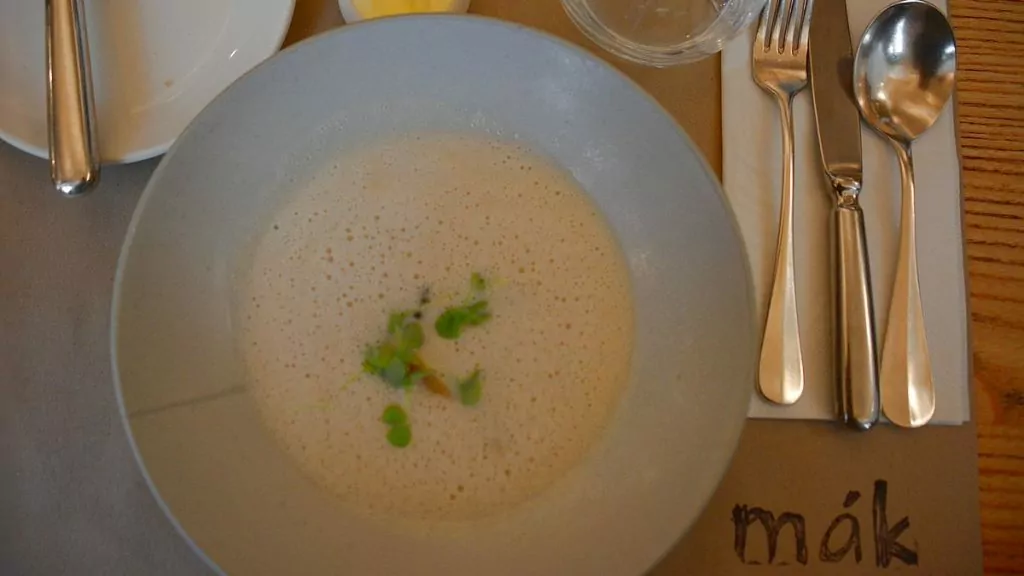
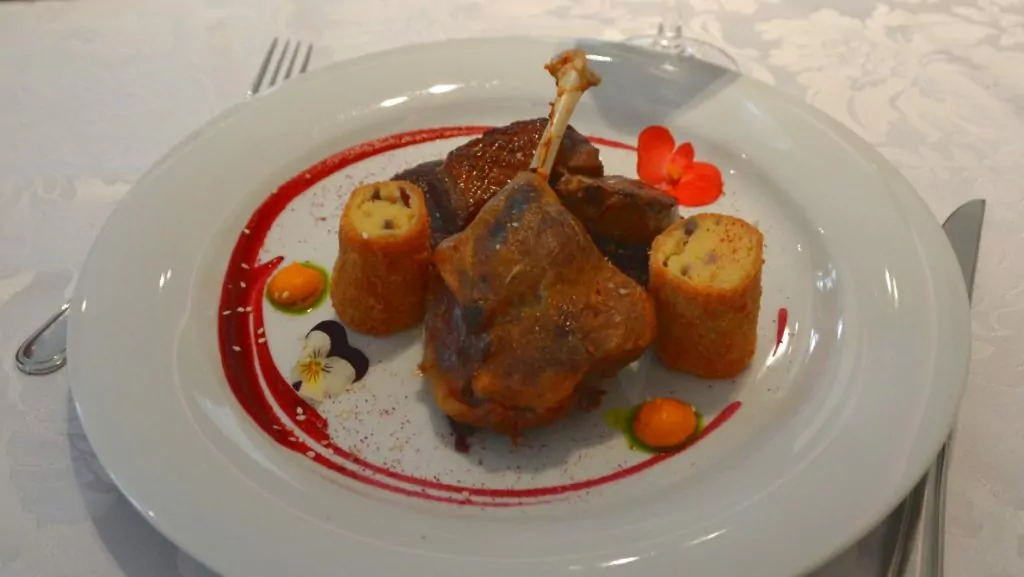
Key ingredients in Hungarian cuisine
Here are some ingredients that are important in Hungarian cuisine:
- Peppers - used lengthwise and crosswise, both fresh and as a seasoning.
- Tea oil - a sour cream-like product similar to Russian smetana
- Meat - mainly pork and poultry, such as chicken, duck and goose, but also lamb, beef and rabbit.
- Kolbász (sausages) and salami
- Vegetables such as root vegetables, white cabbage, red cabbage, parsley root, beans and chilli.
- Acidified vegetables in the form of cabbage, cucumbers, minimelons, etc.
- East - including túró, trappista and soft cheese
- Spices - in addition to peppers, onions, garlic, parsley, cumin, marjoram, etc.
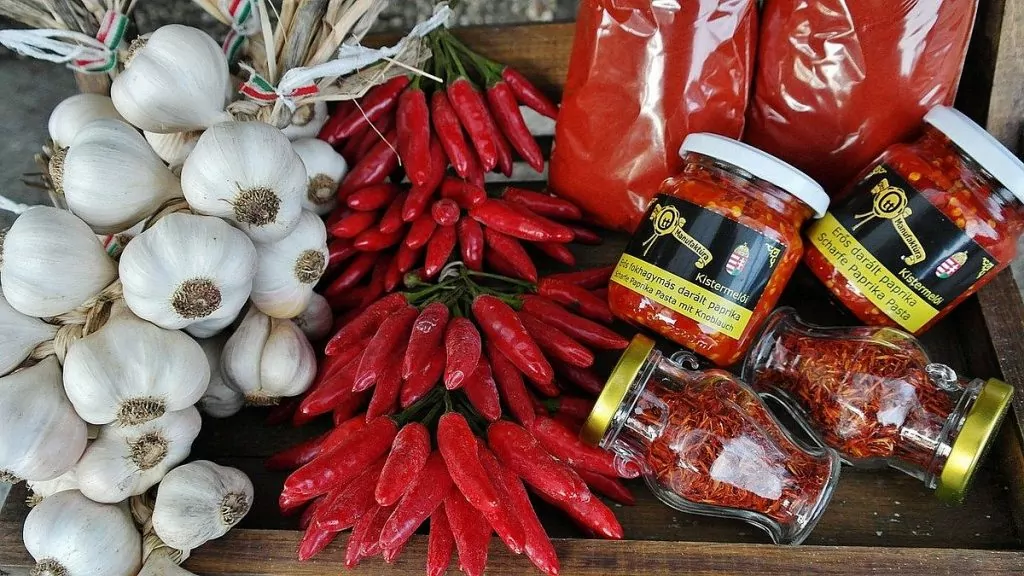
Hungarian food: 22 specialities of Hungarian cuisine
There are many special and interesting dishes in Hungarian cuisine. Here are 22 dishes or side dishes that might be interesting to try.
1. gulyás (goulash)
Goulash is the national dish of Hungary and perhaps the most typical dish in the country. Goulash is a stew or soup with meat and potatoes, or sometimes pasta, and vegetables such as carrots, parsnips, peppers or celery. The recipe may vary, but the common factor is that the stew or soup is flavoured with paprika and cumin. In Sweden, the Hungarian dish 'pörkölt' is sometimes also called goulash.
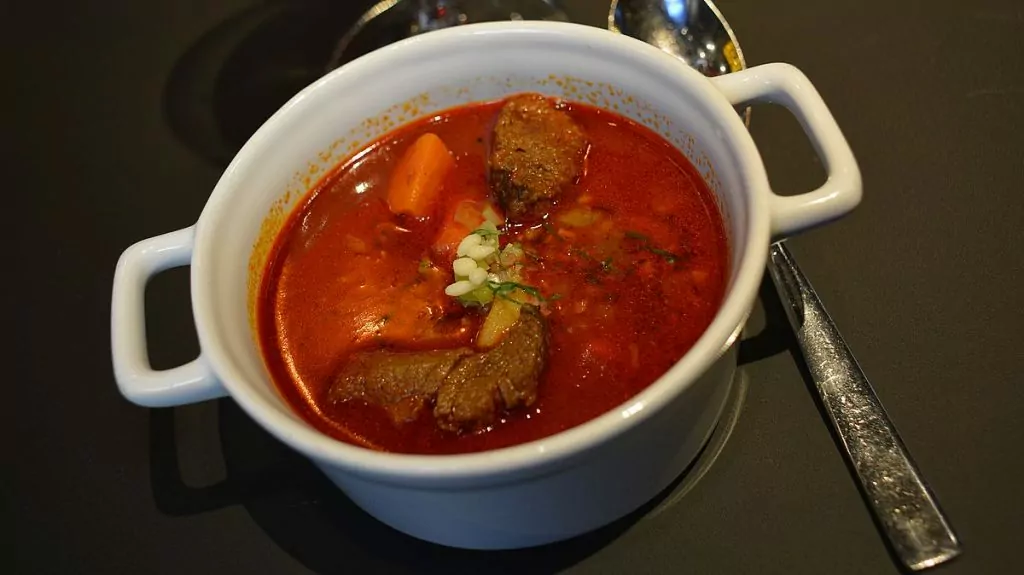
2. pörkölt (meat stew)
Pörkölt is a Hungarian meat stew, made from beef, pork, lamb, rabbit or chicken pork. To make pörkölt, onions and meat are browned together. The meat is then seasoned with paprika and other spices and cooked in water until tender. This dish is sometimes confused with goulash or paprikás.
3. paprika csirke (chicken in paprika sauce)
Paprikás csirke is a classic Hungarian dish consisting of chicken in paprika sauce. The paprika sauce recipe can also be used for veal or fish, for example. So, what is the difference from goulash or pörkölt? According to Taste Hungary the difference is that you mix in cream or sour cream just before serving, which you would never do in goulash or pork.
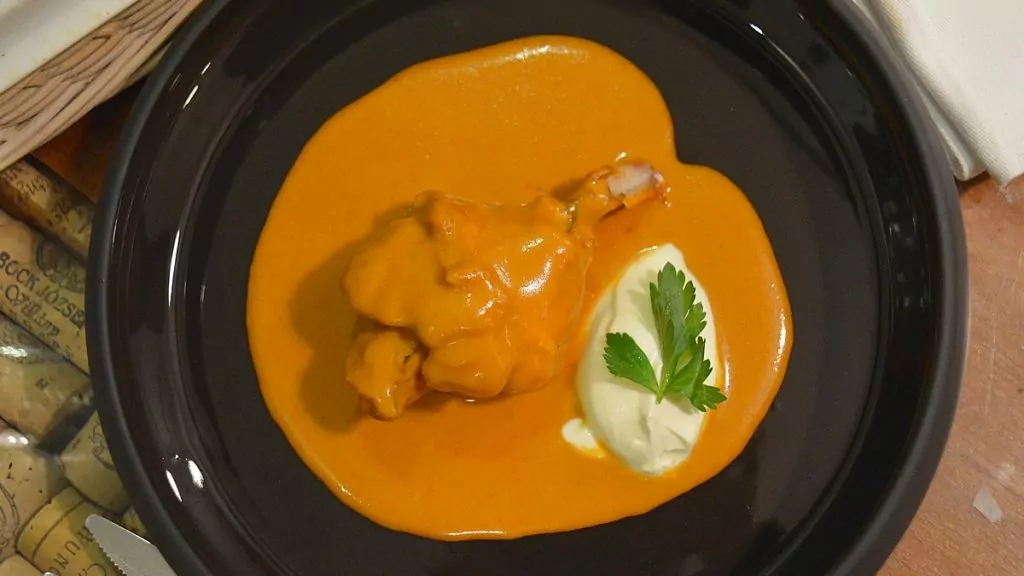
4. Halászlé (fish soup)
Hungarian food is not only meat, but fish can also be on the menu. Halászlé is a spicy fish soup that is heavily flavoured with paprika spices. In this traditional soup you will also find large pieces of fish.
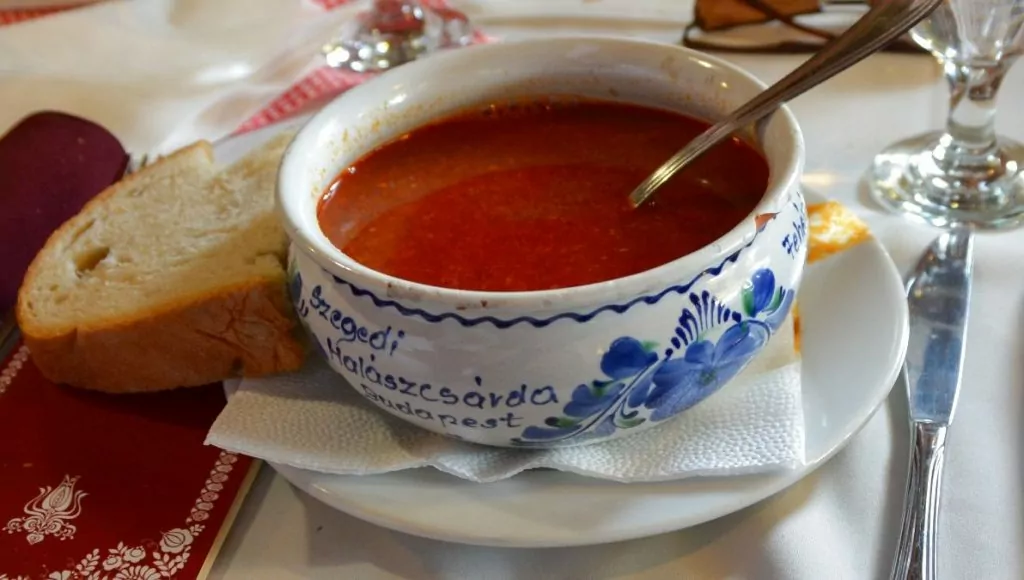
5. Hortobágyi palacsinta (Pancakes with meat stew)
Hortobágyi Palacsinta is a salted pancake (crêpe) filled with meat stew, preferably flavoured with paprika. The dish can be served either as a starter or as a main course.
6. töltött káposzta (cabbage dumplings)
Töltött Káposzta is a typical dish of Hungarian cuisine. These dolmas, filled with rice and meat, are the Hungarian equivalent of the Swedish cabbage dolmas.
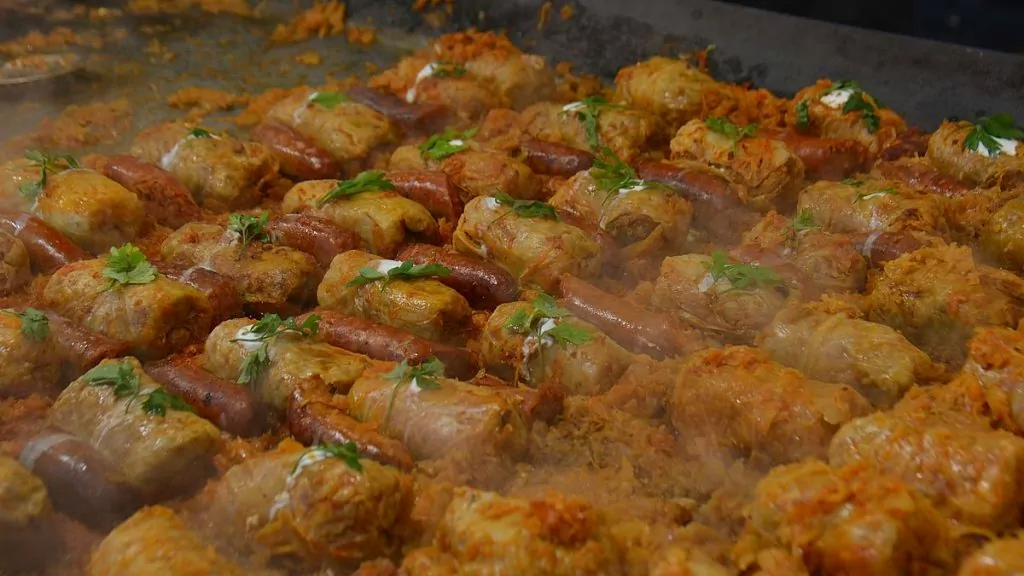
7. Fözelék (vegetable stew)
Fözelék is a Hungarian speciality that can be compared to a casserole, stew or thick soup. Fözelek is usually based on vegetables, but bacon or sausage can be added as a flavouring. The dish can be served as a simple main course at lunch, or as a side dish at dinner.
8. Nokedli (Hungarian pasta)
Nokedli is a type of Hungarian pasta similar to German 'spätzle'. Nokedli is a traditional Hungarian food that is best prepared fresh and can be eaten, for example, with many Hungarian meat dishes.
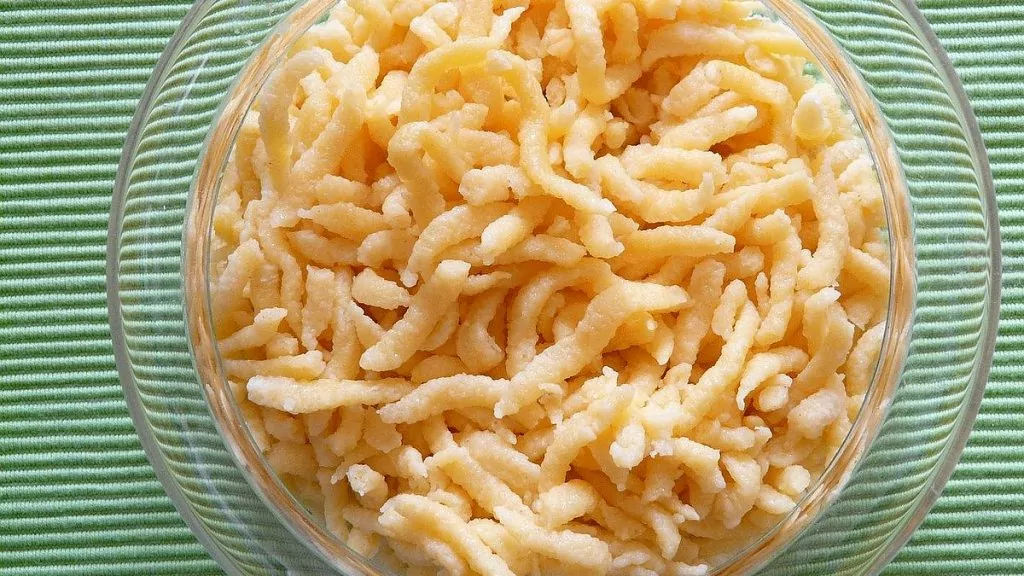
9. Túrós csusza (cheese and pasta dish)
Túrós csusza is a traditional Hungarian dish of pasta, preferably homemade. The pasta is then mixed with butter, crumbled cheese and bacon, and topped with tejföl (Hungarian sour cream). The dish is finally reheated quickly in the oven before serving.
10. Foie gras
Goose liver, and also foie gras, is a delicacy served as a starter in many Hungarian restaurants. The liver is often served with a fruity side dish.
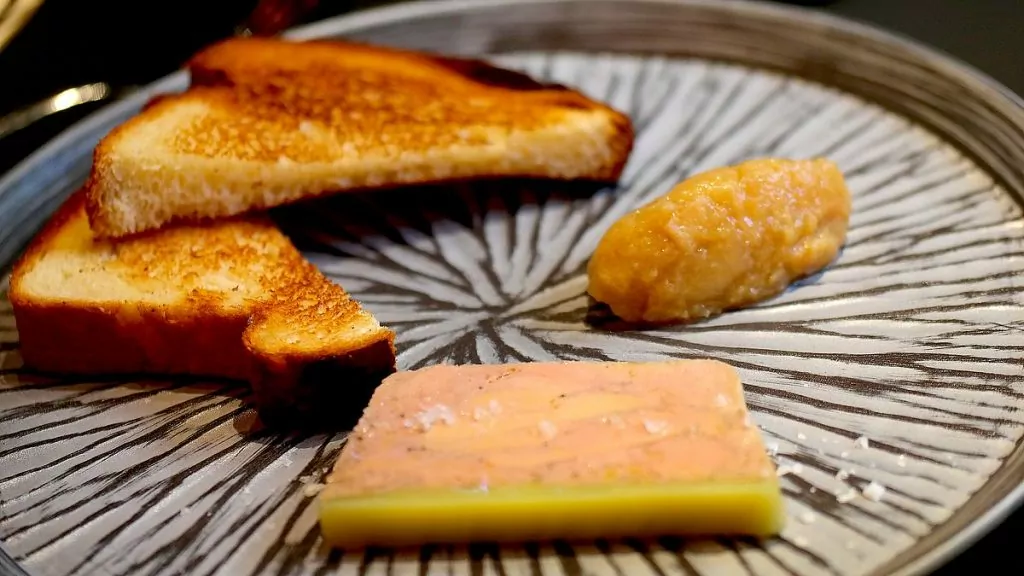
11. Fatányéros (Plankstek)
Did you know that plank steak is a traditional Hungarian dish? According to Wikipedia, this dish was already served at the famous Wampetich (later Gundel) restaurant in Budapest in 1900. In Sweden, the dish became most popular in the 1970s.
12. Körözött (soft cheese)
Körözött is a soft cheese flavoured with paprika. Körözött is sometimes served with salami and other cold cuts as an appetiser.
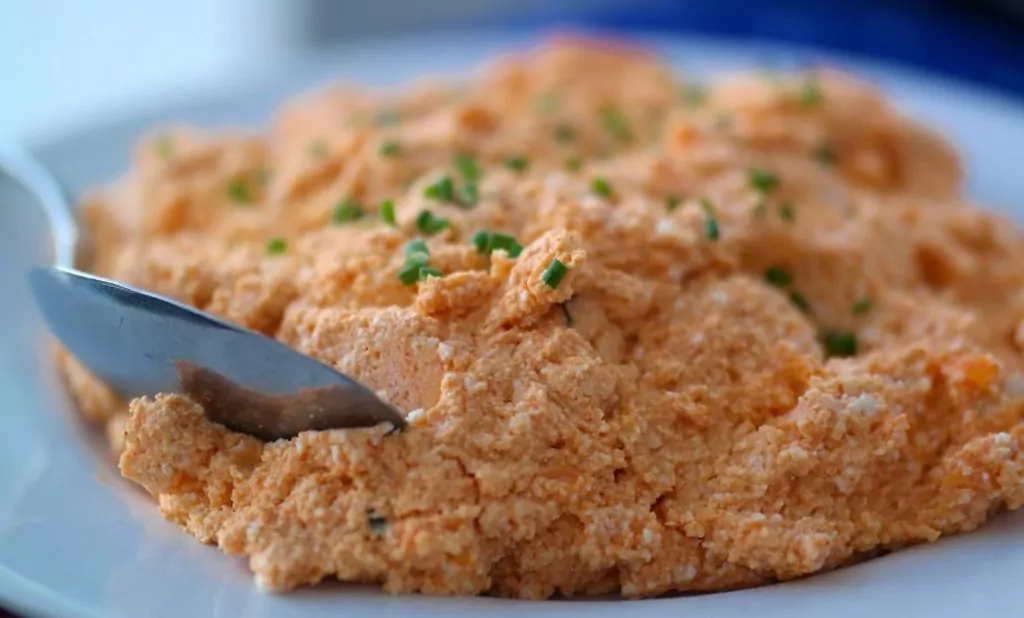
13. langos
Langos are a type of round 'cake' made from yeast and fried dough. The langos can be served with various accompaniments such as sour cream, sheep cheese and onions. You can often find langos in markets and similar places.
14. gyümölcsleves (fruit soup)
Gyümölcsleves, or cold fruit soup, is very popular in Hungary. The soup can be eaten as a starter, but is also suitable as a dessert. One of the most popular fruit soups is Meggyleves, which is a sour cherry soup.
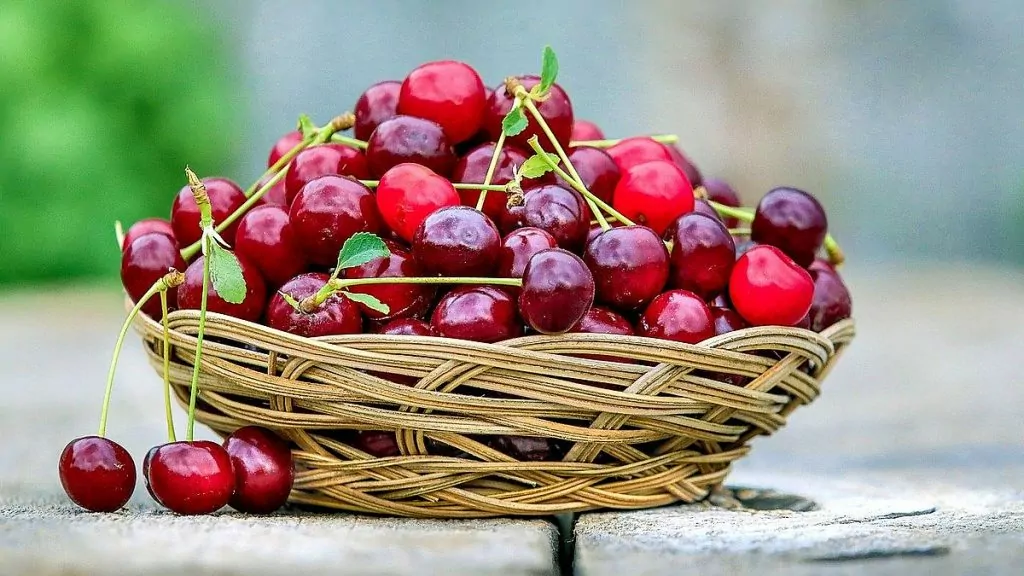
15. beigli (rolled cake)
Beigli is a roll cake filled with walnuts, poppy seeds or chestnut paste in sweet yeast bread. The roll is very popular and can be found on everyone's table in Hungary at Christmas and Easter.
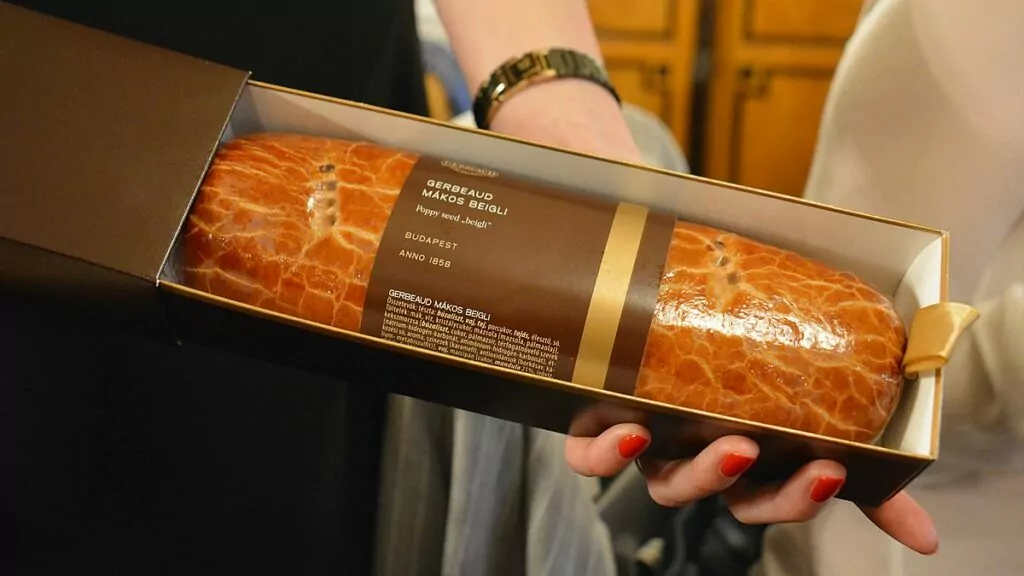
16. almás rétes (apple strudel)
Apple strudel is a pastry consisting of very thin wheat dough, such as puff pastry or shortbread, and apple filling. The filling usually consists of dark raisins, ground cinnamon and caster sugar.
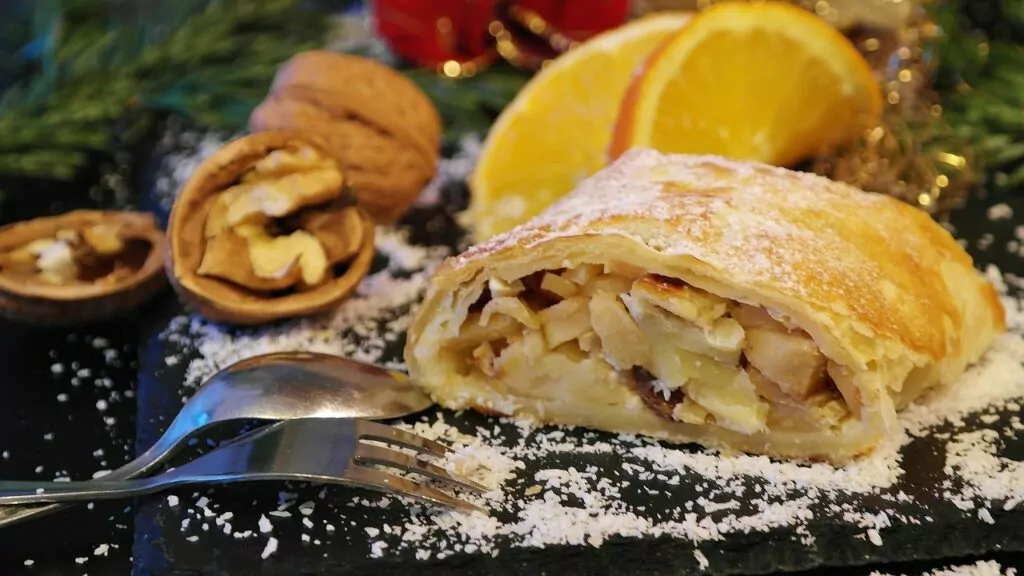
17. palacsinta (Hungarian pancake)
Palacsinta is a thin crepe-like version of a pancake. The pancake can be served with walnut cream and chocolate sauce, or for example with apricot jam or cherries.
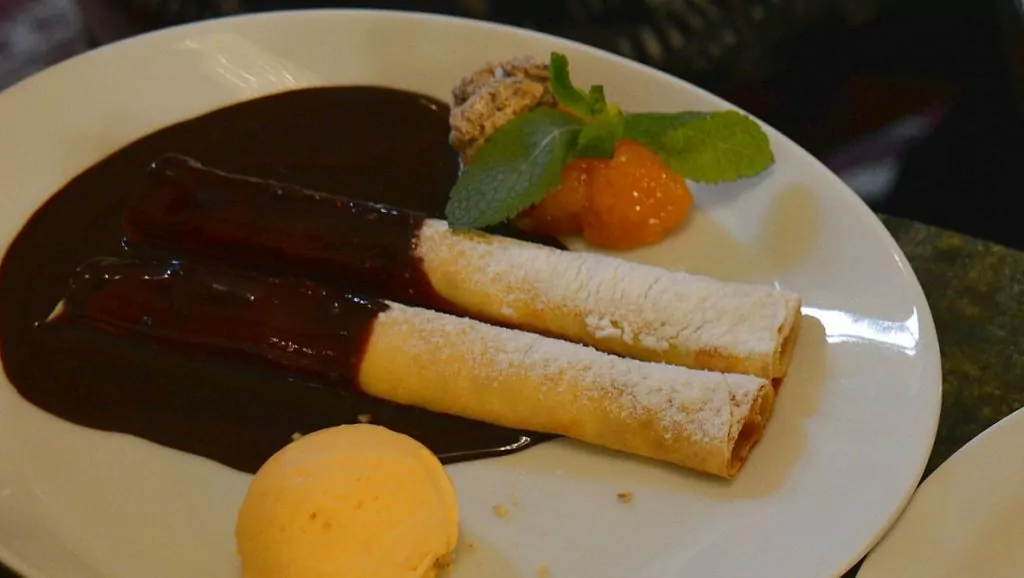
18. Buchteln (pastry with jam)
Buchteln are sweet buns made from dough, filled with jam and poppy seeds or quark. Usually the pastry is baked in a large pan so that it holds together.
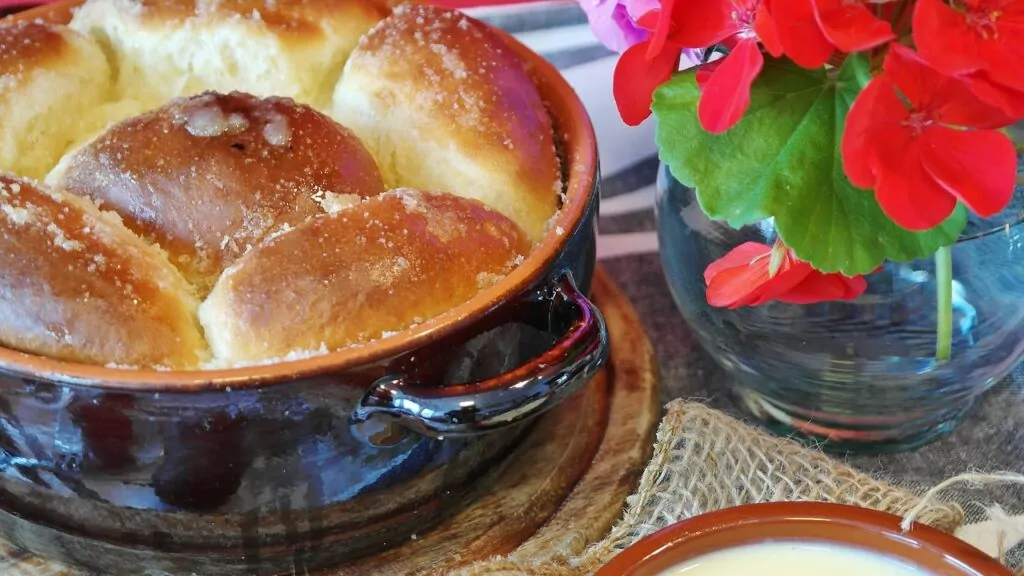
19th Somlói Galuska
Somlói Galuska is a multi-layered dessert made with sugar cookie dough, walnuts and whipped cream.
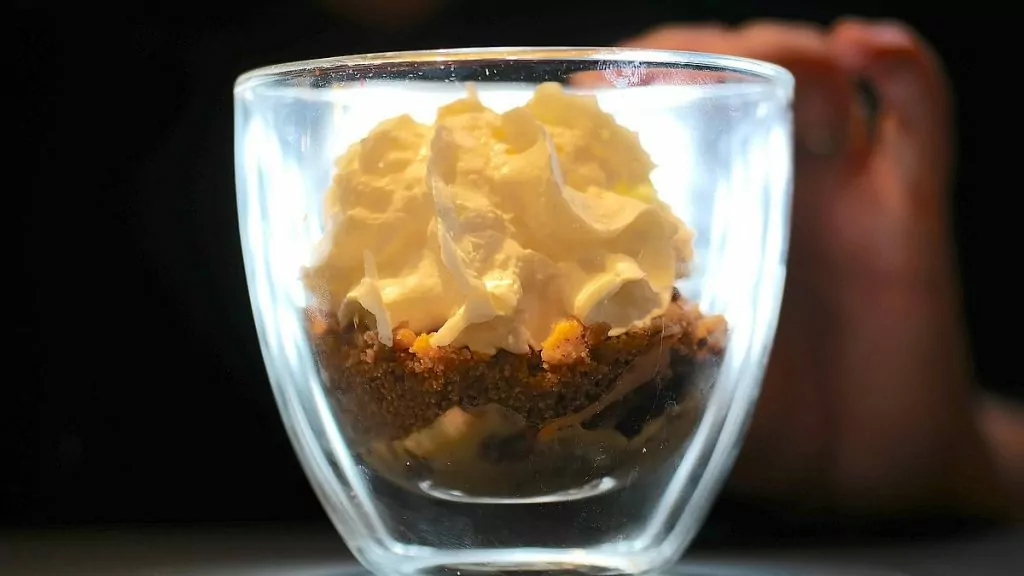
20. Kakaos Csiga (Chocolate bun)
Kakaos Csiga resembles a Swedish cinnamon bun, but has a filling flavoured with cocoa and sugar.
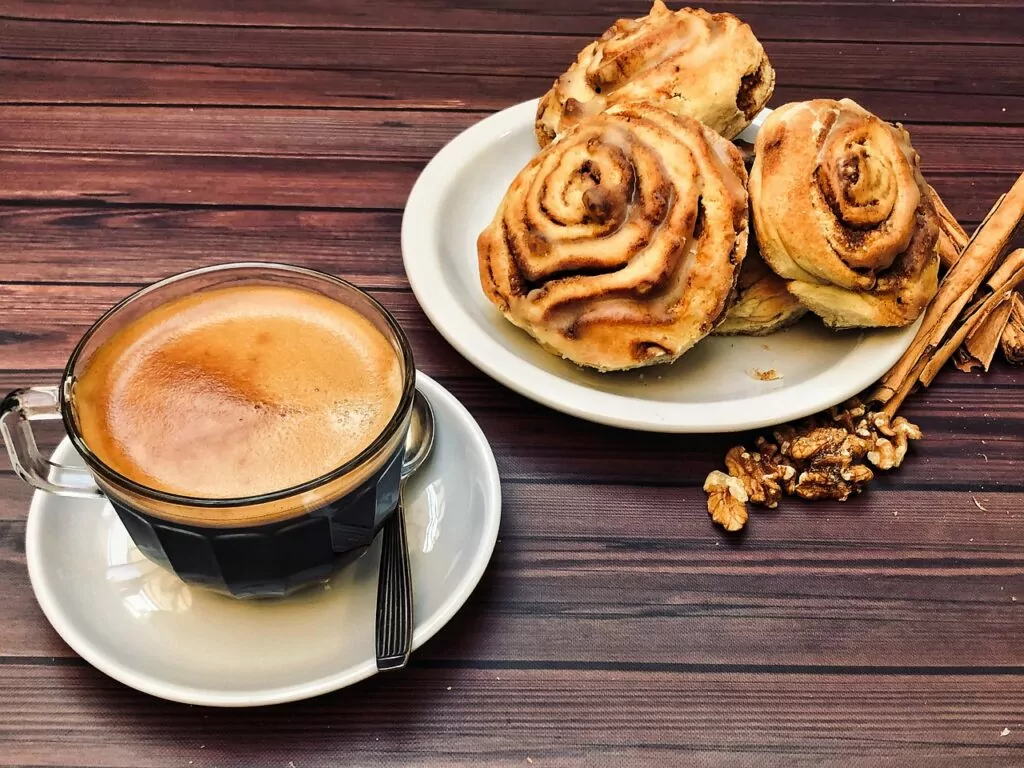
21. Dobos Torte (chocolate cake)
Dobos cake is a Hungarian speciality named after a famous Budapest pastry chef, József Dobos, who created the cake in 1884. It is a five-layer cake with thin cake bases filled with chocolate buttercream and covered with a thin layer of caramel.
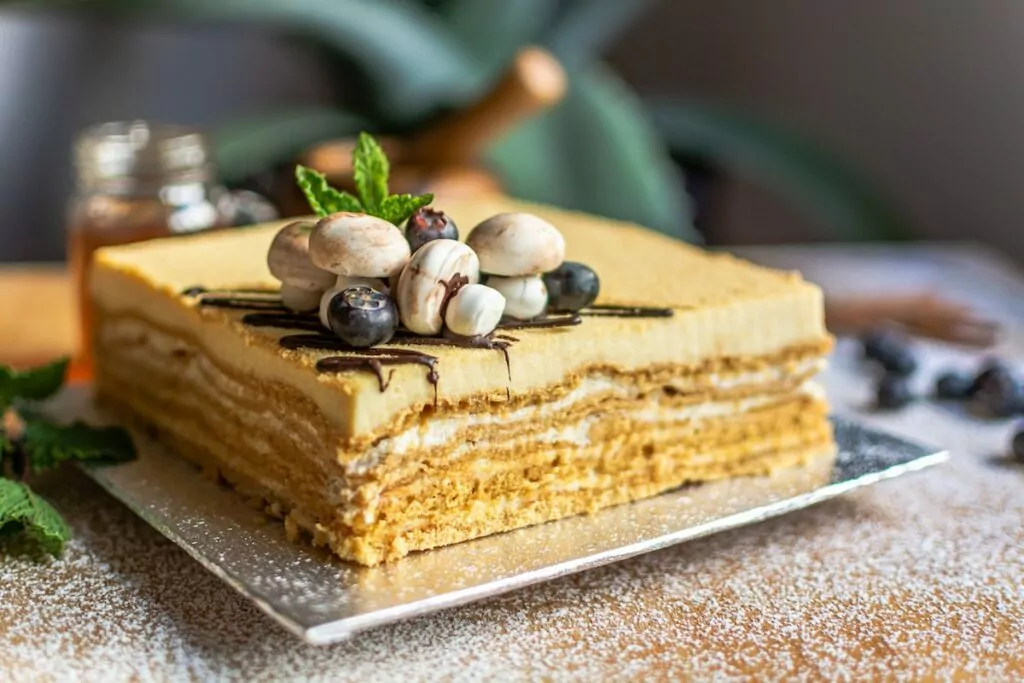
22nd Kürtöskalács (degsnurra)
Kürtőskalács is made from sweet dough wrapped around a cone-shaped baking skewer and rolled in granulated sugar. The twist or roll is roasted over hot coals and in the process the sugar caramelises and forms a shiny, crispy crust. You can find this roll everywhere in markets in Hungary.
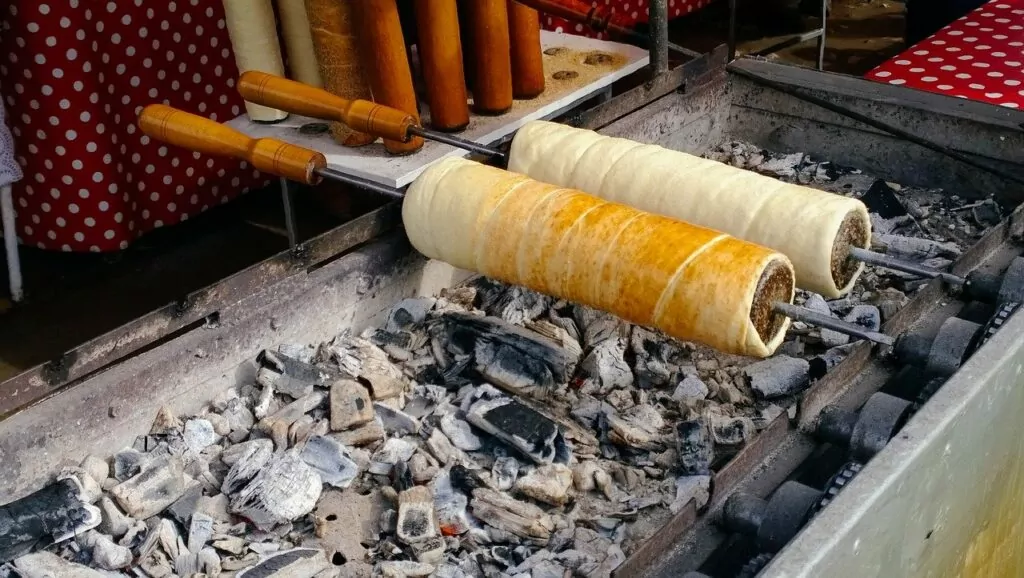
Combining Hungarian food with Hungarian wine
Hungary has a long history of producing both red and white wines. The most famous wine region is Tokaj-Hegyalja, and the wines that come from here are called tokajer or tokaj wine. These sweet wines are made from grapes affected by noble rot and have a special flavour (very good if you ask us!).
Among red wines, perhaps the most famous is Egri Bikavér , the bull's blood of Eger. In total, the country has 22 classified wine districts:
- Sopron
- Somló
- Zala or Balatonmelléke
- Balatonfelvidék
- Badacsony
- Balatonfüred-Csopak
- Délbalaton
- Pannonhalma-Sokoróalja
- Mór
- Etyek-Buda
- Ászár-Neszmély
- Tolna
- Szekszárd
- Mecca
- Villány-Siklós
- Hajós-Baja
- Kunság
- Csongrád
- Mátraalia
- Eger
- Bükkalja
- Tokaj-Hegyalja
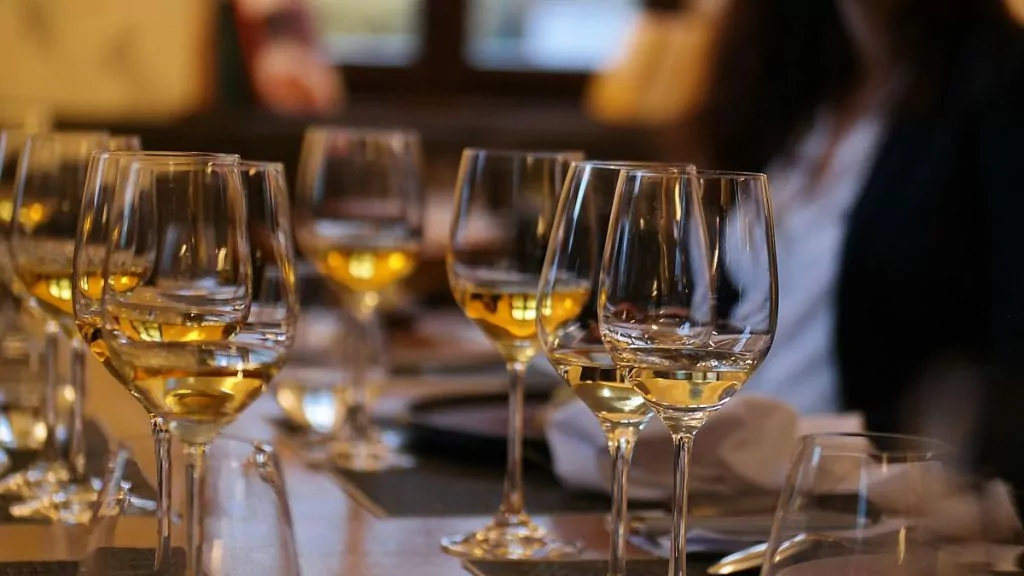
More Hungarian drinks
Besides wine, Hungary is known for two other alcoholic drinks: palinka and Unicum. In addition, Hungary has its own sparkling wine, called Pezsgö.
Palinka is a spirit drink made from distilled fermented fruits. For a drink to be called 'palinka', there must be 100 % of fruit distillation, at least 37.5 % of alcohol, and all ingredients must come from Hungary.
Unicum is a Hungarian bitter that can be drunk before or after a meal. The drink is produced by the company Zwack, based on a secret recipe that includes more than forty different herbs.
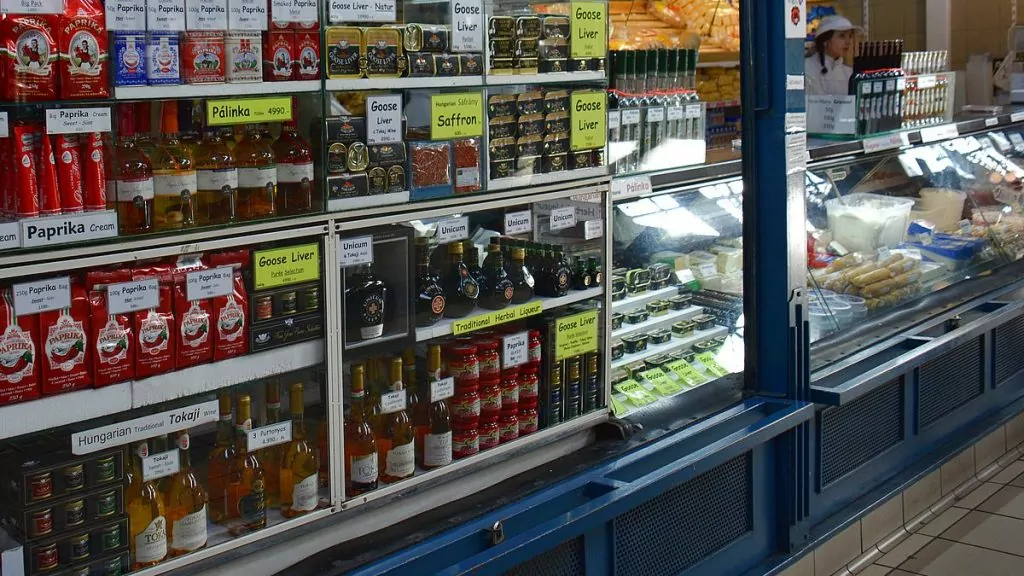
Hungarian food in restaurants and shops
Hungary has developed into a very interesting food country, offering everything from traditional home cooking to international cuisine. In addition, there are many innovative restaurants that use local ingredients and develop classic cuisine into something modern and exciting. If you want to take Hungarian delicacies home with you, you can find them at the Great Market Hall in Budapest.
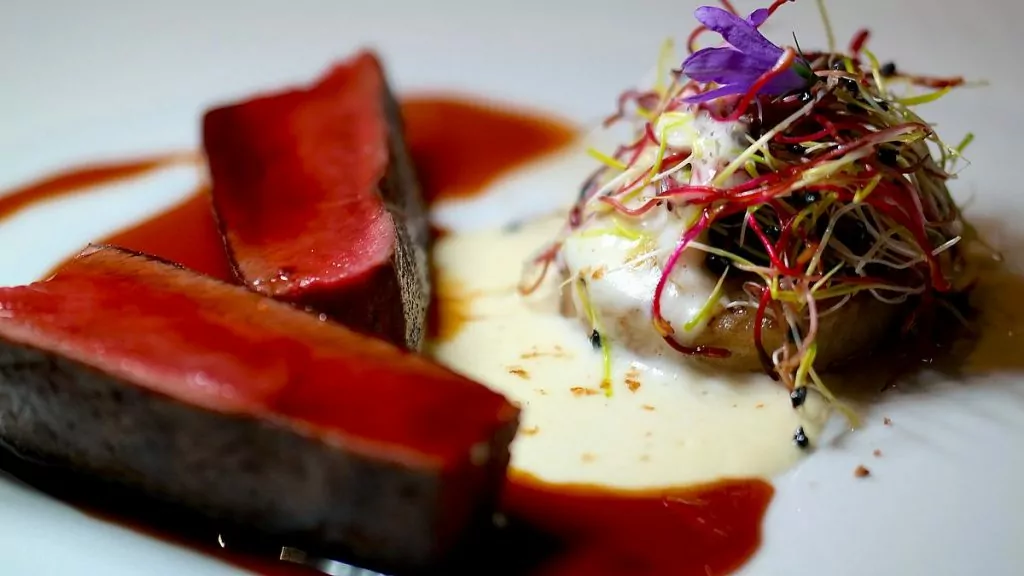
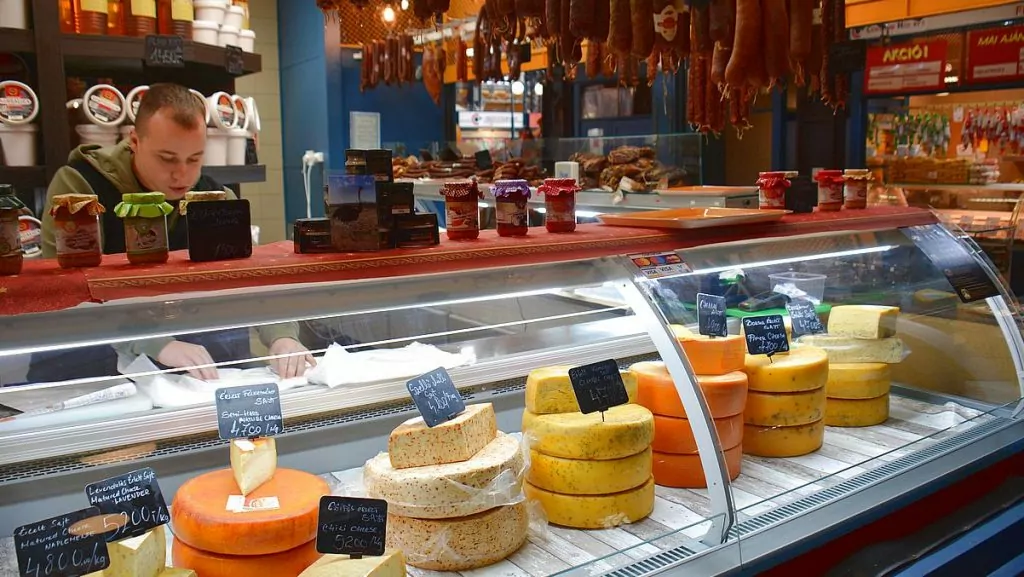
Hungarian food - our favourites
We're big fans of Hungarian food ourselves, and our recent food and wine tour of Budapest certainly didn't hurt that impression. The quality of the finer restaurants is fantastic, but we also like rustic dishes like goulash soup and duck. Another favourite is the paprika-spiced soft cheese körözött. And, of course, tokajvin!
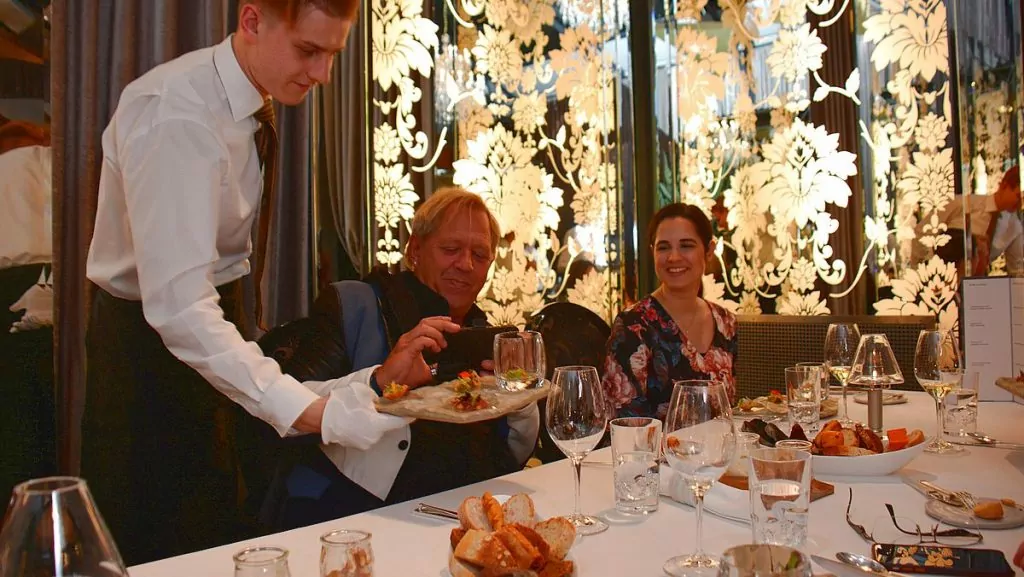
Videos on Hungarian food and restaurants
After our recent food and wine trip, Peter recorded two videos. We've shown them before, but if you haven't seen them, they're here with parts 1 and 2.
What do you think about Hungarian food?
Have you tried Hungarian food? What are your experiences with Hungarian cuisine?
Discover Pécs in the south of Hungary - a gem
Pécs in Hungary. Have you heard of Pécs (pronunciation: Pietch)? We never had, until...
Bathing in Budapest - beautiful Hungarian thermal baths
Have you experienced the baths in Budapest? Hungary is located in an area filled with thermally healthy waters,...
Hotel President in Budapest - lovely spa hotel
Here we are at the Hotel President, our hotel in Budapest. We can say that we...
Tata in Hungary - food and wine in a rural setting
Tata in Hungary is a quiet little town in the countryside, situated on a large beautiful lake....
Caves in Budapest - winding underground cave system
Did you know that there are caves in Budapest? In fact, the entire city rests on a...
New Year in Budapest - New Year menu with Hungarian wines
We had planned the New Year in Budapest well in advance and had booked a table at a cosy...
7 bars and cafes in Budapest you don't want to miss
Hanging out in bars and cafés in Budapest is a way to experience the soul of the city and...
Christmas market in Budapest - lovely Christmas atmosphere in Hungary
It's Christmas market season in Budapest, and we've had a chance to check out two...
3 hotels in Budapest - see which one suits you!
Hotels in Budapest - which one to choose? We have been to Budapest together three times,...
7 restaurants in Budapest you don't want to miss
There are a lot of great restaurants in Budapest, and we visited a bunch of them during our...
Shopping in Budapest - market hall and shopping centres
There was a lot of shopping in Budapest for our part, also this time. We went...
Harkány and Villány -Termal spa and wine region in southern Hungary
On our last day in Hungary, we travelled from Pécs to the Villány wine region in southern Hungary. And in between...
Facts about Hungary - 30 things you (might) not have known
Facts about Hungary! Today we offer 30 things you (maybe) didn't know about the country where...
St George Residence - luxury hotel in Budapest
We have now checked in at the St George Residence - a real luxury hotel in Budapest. It...
9 sights in Budapest you don't want to miss
Here are nine things to do in Budapest! Hungary's capital city is home to stunning buildings, beautiful bathhouses and...
Things to do in Budapest - 23 tips for a successful weekend
What to do in Budapest? We have visited the capital of Hungary several times, and after our...
Hungarian beer - a guide to beer in Budapest
Guest writer: Jonathan Gharbi de Maré Budapest is wonderful in the summer but often a little too hot so...
Impressions from the trip to Budapest
We are home from Budapest and back at work... We can definitely recommend Budapest for a cosy...
Champagne, micro-brewed beer and good food in Pécs
Now it's time to tell you a bit more about what we did in Pécs in...
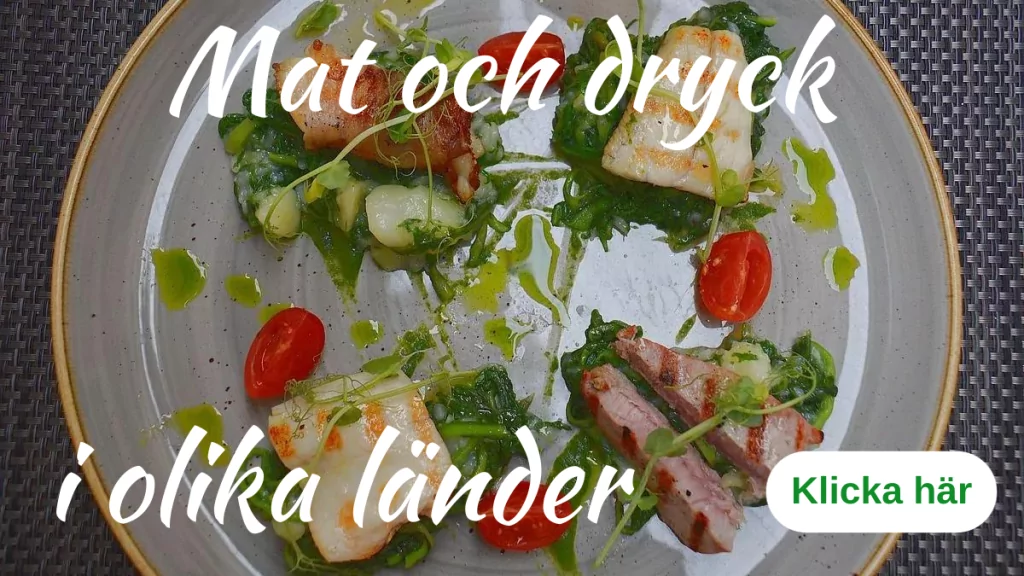


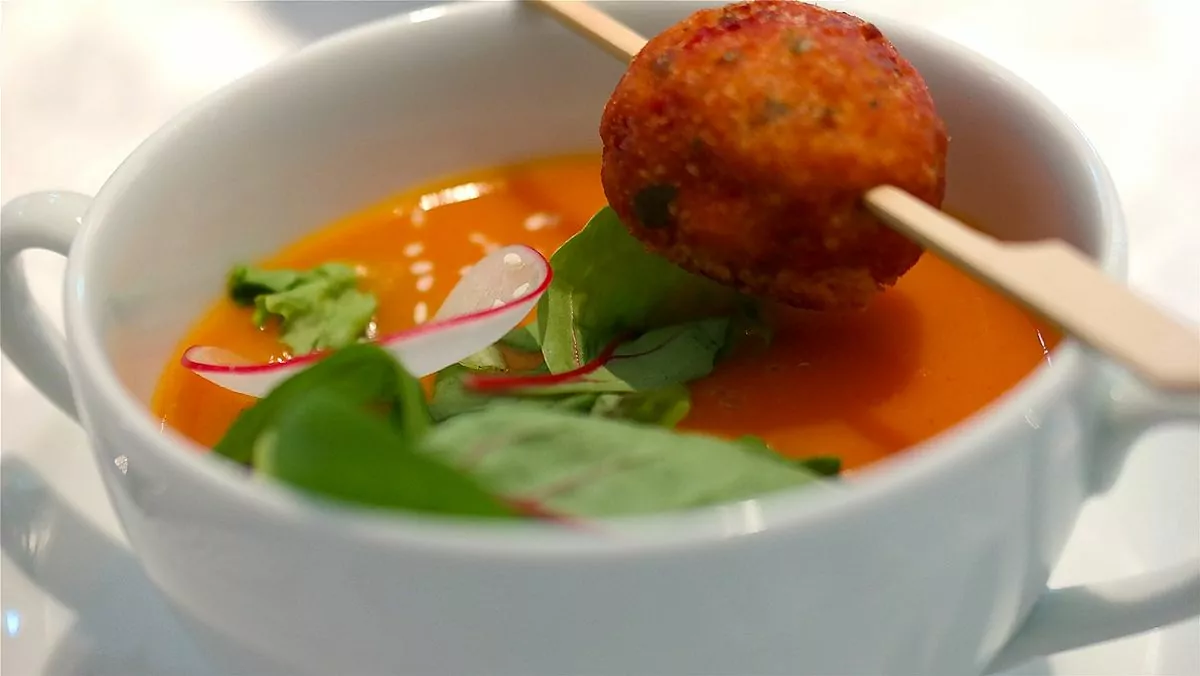






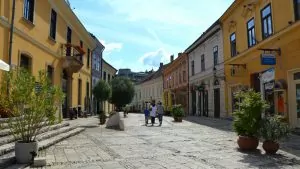






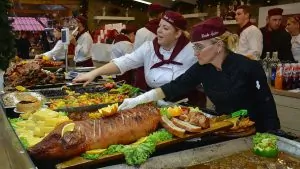

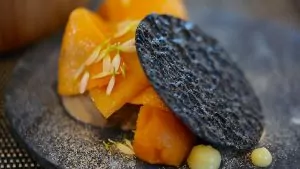

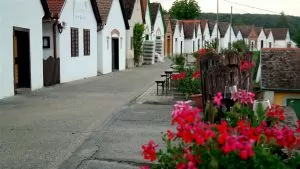

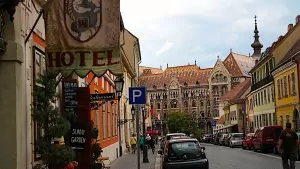


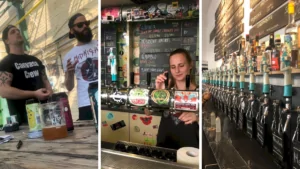


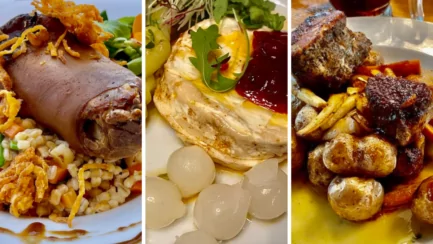

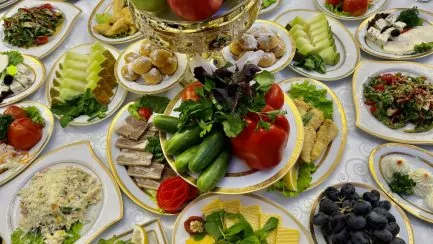
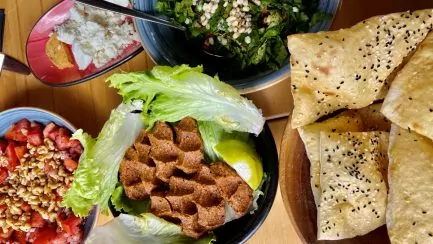

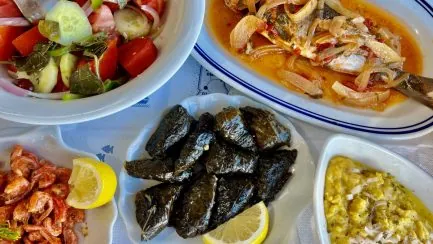



Lena - good for the soul says:
Goulash is the first and only thing that comes to mind when I think of Hungarian food. But plank steak? Nope.
So... I just have to say again. What amazing work you put into your posts! Absolutely incredible. Thank you for that!
Hug Lena
05 January 2020 - 8:53
Helena says:
Yes, goulash is probably the most famous! I have not eaten plankstek in Hungary so I do not know how common it is really, but what I read was a bit interesting so I could not help but include it 😉 And thank you for nice words!
05 January 2020 - 14:38
Lena - good for the soul says:
Well, I guess you misunderstood me about the plank roast. I meant "no, Hungarian!? how surprised I was." Sort of. No question that you wrote that. Haha, sorry for my lack of clarity!
08 January 2020 - 5:51
Helena says:
Hi Lena! No, I understood! ?? But perhaps wanted to clarify anyway ? Have a nice time! Hugs
08 January 2020 - 6:12
Snows says:
I thought the Hungarian food was good. It had good spices and was usually rich and savoury.
05 January 2020 - 9:31
Helena says:
Agree about spicy and musty! 🙂
05 January 2020 - 14:39
Anki says:
Once upon a time I had company with a Hungarian guy, we lived next door and in his apartment lived two other Hungarians, one of whom was a former chef ... there I got to enjoy their home cooking every day - usually pork sausage ... and palacsinta ... and I love Hungarian food! Then we have been in Hungary by train once (Budapest) and by car three times ... good food and good wine 🙂.
05 January 2020 - 10:55
Helena says:
But how exciting and interesting! Glad you liked the food!
05 January 2020 - 14:39
Ama de casa says:
Looked both delicious and exciting all that! Hmm... I'm still wondering what I ate... 😀.
Have a nice three-day evening!
05 January 2020 - 11:00
Helena says:
Yes, I am also still wondering what you ate! 😉 And wish you the same!
05 January 2020 - 14:40
Emma, sun like sun? says:
The food seems to have some similarities with the food in the Balkans, quite rustic food. And oh so good! Do you know if the cabbage rolls are made with fresh or fermented white cabbage? My mother-in-law made sarma, cabbage rolls with sauerkraut, and soooo good! Asch, now I got hungry!
(A piece of text in No. 3 has probably been misplaced, the difference between goulash and pork sausage. Feels like it should be in no. 2.)
05 January 2020 - 14:34
Helena says:
Yes, the food is quite rustic! No, I don't really know about the cabbage dumplings ... but if I google translate Hungarian recipes, it says "sauerkraut". Have not eaten them myself, only seen them prepared at the Christmas market (where we took the photo). Lovely with your mother-in-law's cabbage dumplings! Where does she come from? And thanks for letting me know when you see something in the text, but this should actually be number three. It's about how right three differs from right one and two (it seems that all three can be confused ;)).
05 January 2020 - 14:47
Emma, sun like sun? says:
If you get the chance, try these with sauerkraut! It adds an extra dimension, since we're talking about fermented vegetables and umami.
My mother-in-law was from Serbia, my husband was born there. I love that I have that influence in my own kitchen. Incredibly good food!
(Oops, missed that it said "from". Now I get it.)
05 January 2020 - 18:41
Helena says:
Yes, but just that, now I recognise this with Serbia! What fun to have these influences in the kitchen! And yes absolutely, will make sure to try the next time I get the opportunity! 🙂
05 January 2020 - 20:16
BP says:
If it wasn't for the paprika, I would probably become very fond of Hungarian food. I like peppers, but peppers don't like me and my stomach, so to speak. Have been a few times to the restaurant Moldau at Bergsunds Strand. If you are looking for Hungarian food at home, just go there.
05 January 2020 - 17:12
Knut says:
What a nice read! And high quality pictures too!
06 January 2020 - 13:12